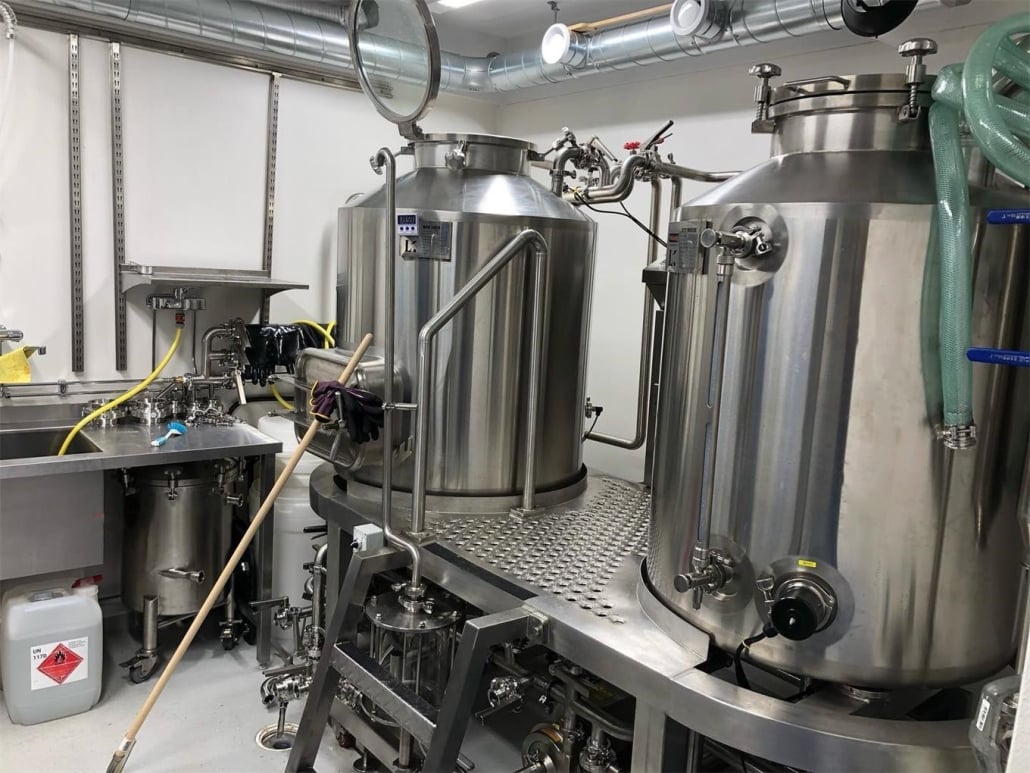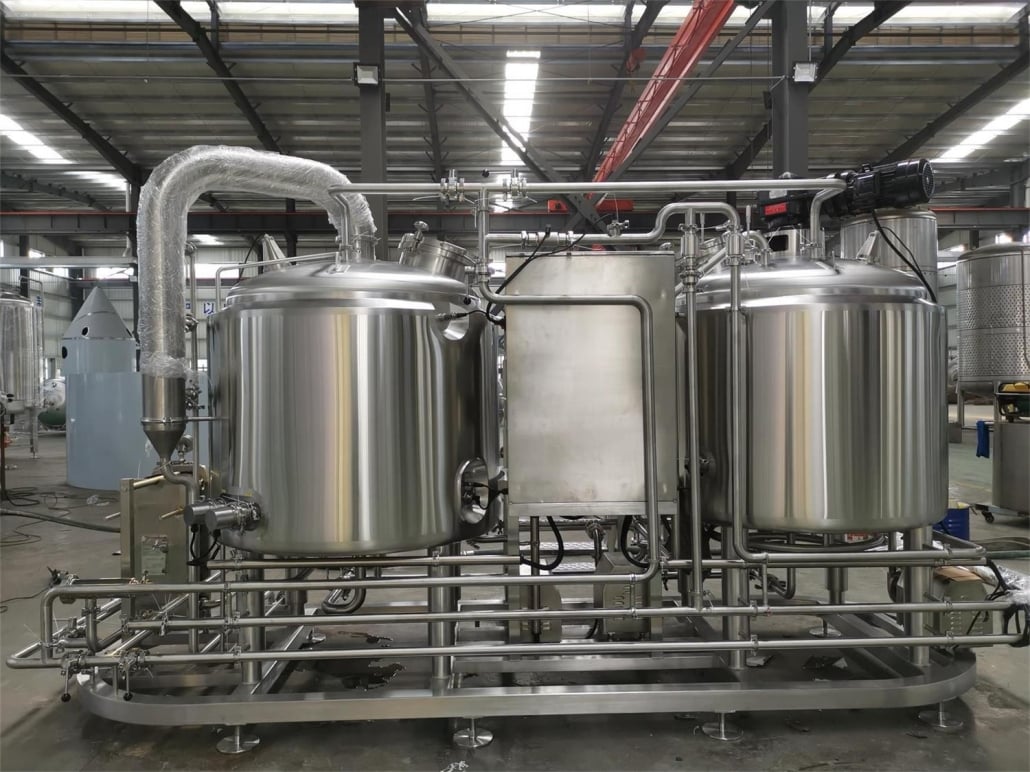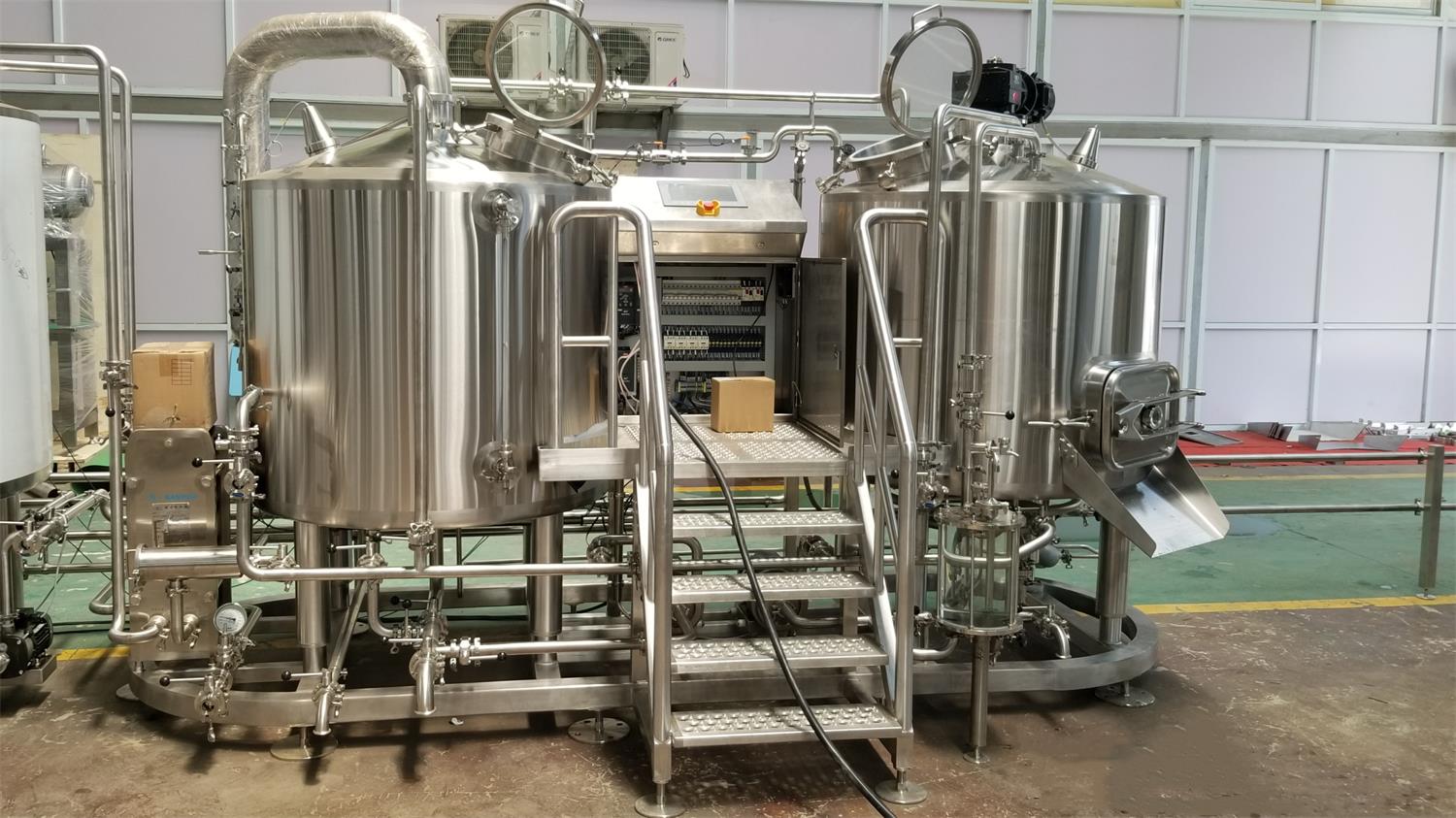4 Vessel Brewing System: A Comprehensive Guide
Overview: What is a 4 Vessel Brewing System?
When diving into the world of brewing, you quickly realize that the equipment you choose can make or break the quality of your beer. One of the most efficient setups in commercial brewing is the 4 vessel brewing system. This system, consisting of a mash tun, lauter tun, brew kettle, and whirlpool, allows brewers to produce high-quality beer with greater control over the brewing process. But what exactly makes this system stand out? Let’s break it down.
Equipment Guide: Understanding the 4 Vessel Brewing System
The 4 vessel brewing system is designed for brewers who need precision, efficiency, and scalability. Each vessel plays a specific role, contributing to the overall brewing process. Here’s a closer look at what each vessel does:
- Mash Tun: This is where the magic begins. The mash tun is responsible for mixing milled grains with water, converting the starches into fermentable sugars. It’s insulated to maintain a consistent temperature, which is crucial for enzyme activity.
- Lauter Tun: After mashing, the wort needs to be separated from the spent grains. The lauter tun, equipped with a false bottom, filters the wort through the grain bed, ensuring a clear liquid for the next stages.
- Brew Kettle: Here, the wort is boiled, which serves several purposes: sterilization, hop addition for bitterness, and concentration of the wort. This is where flavors start to build up.
- Whirlpool: The final vessel in the system is the whirlpool, used to separate the trub (solid particles) from the wort. The whirlpool action causes the trub to collect in the center, making it easier to remove, resulting in a clearer beer.

Brewing Process: Step-by-Step Guide
Brewing with a 4 vessel system is a meticulous process that requires attention to detail. Here’s how it typically unfolds:
- Mashing: The first step involves mixing the crushed malt with hot water in the mash tun. The goal is to activate enzymes that break down complex carbohydrates into fermentable sugars. Temperature control is crucial here; typically, the mash is held at a specific temperature (around 65°C or 149°F) for about an hour.
- Lautering: After the mash is complete, the wort (sugar-rich liquid) is separated from the grain husks in the lauter tun. The wort is drained off, and the grains are rinsed with hot water (a process known as sparging) to extract as much sugar as possible.
- Boiling: The wort is then transferred to the brew kettle, where it’s boiled for about 60-90 minutes. During this stage, hops are added at various points to impart bitterness, flavor, and aroma to the beer. The boil also sterilizes the wort, ensuring no unwanted microorganisms can spoil the beer.
- Whirlpooling: After boiling, the wort is quickly cooled in the whirlpool. This step separates the solid particles (trub) from the liquid. The wort is then ready to be fermented.
Brewing System Components: A Detailed Breakdown
| Vessel | Function | Key Features | Importance |
|---|---|---|---|
| Mash Tun | Converts starches to sugars through enzymatic activity | Insulated, temperature control, false bottom | Essential for sugar conversion, impacting final ABV |
| Lauter Tun | Separates wort from grain husks | False bottom, sparging system, rakes for even distribution | Ensures clear wort, affecting clarity and flavor |
| Brew Kettle | Boils wort, adds hops for bitterness | Heating element, hop addition ports | Critical for sterilization, flavor, and aroma development |
| Whirlpool | Separates trub from wort post-boiling | Tangential inlet, trub cone | Improves wort clarity, reducing potential off-flavors |
Design and Layout: Customizing Your 4 Vessel System
Designing a brewery layout with a 4 vessel system requires careful consideration of space, workflow, and future expansion. Here’s what you need to know:
| Aspect | Details | Why It Matters |
|---|---|---|
| Space Requirements | The 4 vessel system typically requires more space than smaller setups. Proper spacing between vessels is crucial for safety and ease of use. | Adequate space ensures smooth operation and maintenance. |
| Workflow Efficiency | The layout should facilitate a logical flow from one vessel to the next. Minimizing the distance between vessels can reduce transfer times and energy usage. | Improves production speed and reduces labor costs. |
| Future Expansion | Consider how the system can be expanded as your brewery grows. Modular designs allow for adding more vessels or upgrading components. | Future-proofing your investment for increased production. |
| Aesthetic Design | While functionality is key, the aesthetic appeal of your brewing system can enhance the overall brand experience, especially in open-concept breweries. | Enhances customer experience and reflects brand quality. |
Pricing and Suppliers: What to Expect
Investing in a 4 vessel brewing system is a significant financial commitment. Prices can vary widely depending on the size, customization, and supplier. Here’s a general guide:
| Supplier | Price Range | Customization Options | Lead Time | Customer Support |
|---|---|---|---|---|
| Supplier A | $100,000 – $200,000 | Custom vessel sizes, branding, automated controls | 6-12 months | 24/7 support, training included |
| Supplier B | $150,000 – $250,000 | Modular design, advanced filtration systems | 8-14 months | On-site installation, extended warranty |
| Supplier C | $120,000 – $220,000 | Eco-friendly materials, energy-efficient heating options | 5-10 months | Remote support, spare parts readily available |
Installation, Operation, and Maintenance
Once you’ve selected your system, the next steps are installation, operation, and maintenance. Here’s what to keep in mind:
| Stage | Key Considerations | Why It Matters |
|---|---|---|
| Installation | Requires professional installation to ensure safety and compliance with local regulations. | Proper installation prevents operational issues and ensures longevity. |
| Operation | Training is essential for operators to understand the nuances of the system. Regular monitoring is crucial. | Efficient operation maximizes productivity and minimizes downtime. |
| Maintenance | Regular maintenance, including cleaning and inspections, is necessary to keep the system running smoothly. | Prevents costly breakdowns and prolongs the lifespan of the equipment. |
Choosing the Right Supplier
Selecting the right supplier is as important as choosing the system itself. Here’s how to evaluate your options:
| Criteria | Details | Why It Matters |
|---|---|---|
| Reputation | Look for suppliers with a proven track record in the industry. | Ensures reliability and quality of service. |
| Customization | Assess how willing and capable the supplier is in customizing the system to your needs. | Customization can provide a competitive edge in brewing. |
| Support Services | Evaluate the level of support offered, including training, installation, and after-sales service. | Strong support services reduce operational risks. |
| Pricing and Value | Compare not just the price but the overall value, including durability, efficiency, and potential for future upgrades. | Ensures long-term cost-effectiveness and return on investment. |
Advantages of a 4 Vessel Brewing System
The 4 vessel brewing system offers several advantages over simpler systems. Here’s why many breweries opt for this setup:
| Advantage | Details | Why It Matters |
|---|---|---|
| Efficiency | Allows for simultaneous processes (mashing, lautering, boiling, whirlpooling), reducing brewing time. | Increases production capacity, crucial for commercial breweries. |
| Consistency | The precise control over each step ensures consistent quality across batches. | Builds brand reliability and customer loyalty. |
| Scalability | Can easily be scaled up as demand grows, without significant downtime or need for new infrastructure. | Future-proofs your investment, reducing long-term costs. |
| Flexibility | Allows brewers to experiment with different recipes and techniques without compromising workflow. | Encourages innovation and product differentiation. |
Disadvantages of a 4 Vessel Brewing System
While there are many benefits, it’s also important to consider the potential drawbacks:
| Disadvantage | Details | Why It Matters |
|---|---|---|
| Cost | The initial investment and operating costs are significantly higher than simpler systems. | May not be feasible for small or startup breweries. |
| Complexity | Requires skilled operators and more rigorous maintenance routines. | Increases labor costs and operational risks if not managed properly. |
| Space Requirements | Needs more space, which can be a limitation in smaller brewing facilities. | Could limit potential locations for your brewery. |

FAQs
| Question | Answer |
|---|---|
| What is the main benefit of a 4 vessel brewing system? | The main benefit is efficiency. With four separate vessels, different brewing stages can occur simultaneously, reducing total brewing time. |
| How much space does a 4 vessel brewing system require? | Space requirements vary, but generally, you’ll need a large facility with enough room for each vessel plus additional space for operations. |
| Is a 4 vessel brewing system suitable for small breweries? | It depends on your production goals. For large-scale production, it’s ideal. However, for smaller batches, a simpler system might be more practical. |
| What is the typical cost of a 4 vessel brewing system? | Prices can range from $100,000 to $250,000 depending on customization and supplier. |
| How difficult is it to maintain a 4 vessel brewing system? | Maintenance can be complex due to the number of components, but with regular checks and proper training, it can be managed effectively. |
Conclusion
Investing in a 4 vessel brewing system is a significant decision that can elevate your brewing operations to new heights. Whether you’re looking to increase efficiency, ensure consistency, or scale your production, this system offers the flexibility and control needed to produce high-quality beer. However, it’s crucial to weigh the advantages against the costs and operational complexities to determine if it’s the right fit for your brewery.
By understanding the equipment, process, and market, you can make an informed choice that aligns with your brewing goals. Whether you’re a seasoned brewer or just starting, the 4 vessel brewing system could be the key to crafting your signature brew.
Additional FAQs About a 4 Vessel Brewing System (2025)
1) What throughput gains can I expect versus a 2–3 vessel brewhouse?
With proper scheduling and parallelization, a 4 vessel brewing system typically delivers 1.3–1.8x brews/day versus similar-sized 2–3 vessel systems due to simultaneous mash/lauter and boil/whirlpool.
2) Do I need rakes and grist hydration on the lauter tun?
For malt bills >18–20% adjuncts or high-gravity beers, rakes (with variable speed/height) and a grist hydrator improve runoff uniformity, reduce stuck sparges, and stabilize lautering times.
3) Which heat source is most efficient at 10–30 hL scale—steam, direct fire, or electric?
Steam is most versatile and efficient for step mashes and quick ramp rates; electric is clean and controllable at smaller scales; direct fire can have lower capex but less uniform heating and higher venting needs.
4) How do I size pumps and piping for a 4 vessel system?
Target 1.5–2.5 m/s line velocity in sanitary piping, use VFD pumps sized for both gentle mash recirculation and rapid kettle/whirlpool transfers, and include balance lines/PRVs for hot-break surges.
5) What automation level is worth it?
Semi-automated (P&ID with VFDs, temp/PID, level sensors, recipe steps) gives most ROI. Full PLC/SCADA with automated valve manifolds adds repeatability and data but raises capex—best for >3–4 brews/day.
2025 Industry Trends for 4 Vessel Brewing Systems
- Parallel-batch optimization: Breweries push 6–10 brews/day on mid-size 4-vessel lines with tighter changeovers and heat recovery.
- Energy efficiency: Stack economizers, vapor condensers, and insulated vessels cut kWh/hl and gas use.
- Data-native brewhouses: PLCs expose OPC UA/MQTT tags for MES/QA dashboards; CIP cycles logged automatically.
- Hygienic upgrades: Documented surface finishes (≤0.8 μm Ra), orbital welds, and high-impact rotary spray devices shorten CIP.
- Water reduction: Lauter/copper CIP optimization and rinse endpoints lower hl/hl water ratios.
Benchmark Metrics for 4 Vessel Brewing Systems (2024–2025)
| Metric | 2024 | 2025 (proj.) | Notes/Source |
|---|---|---|---|
| Brews/day on 20–40 hL 4-vessel lines | 4–6 | 6–8 | Scheduling + parallelization (OEM/integrator data) |
| Average brewhouse thermal efficiency (with heat recovery) | 68–74% | 72–80% | Stack economizers/vapor condensers |
| Water-to-beer ratio (hl/hl) | 4.0–5.0 | 3.2–4.5 | CIP/rinse optimization; BA sustainability |
| Share of new systems with PLC + remote I/O | ~55% | ~70% | OEM specs/trade feedback |
| Lauter tun rakes adoption (mid-size) | ~62% | ~75% | High-gravity/adjunct demand |
Authoritative references:
- Brewers Association Sustainability Benchmarks: https://www.brewersassociation.org/sustainability
- ASME BPE (hygienic design principles): https://www.asme.org/codes-standards
- Master Brewers Association Technical Quarterly: https://www.mbaa.com/publications/tq
Latest Research Cases
Case Study 1: Heat Recovery Upgrade on 30 hL 4-Vessel Line (2025)
Background: Regional brewery sought utility savings; existing system lacked vapor condensation and hot liquor integration.
Solution: Installed vapor condenser on kettle/whirlpool, upgraded insulation, integrated heat recovery to HLT, and added conductivity-based rinse endpoints in CIP.
Results: Thermal energy use reduced 12–16%; water-to-beer dropped from 4.6 to 3.8 hl/hl; brewday duration unchanged; payback estimated at 14–18 months.
Case Study 2: Automation-Driven Repeatability for High-Gravity Ales (2024)
Background: Variability in OG/IBU across batches on a semi-manual 25 hL system.
Solution: PLC recipe control with automated valve manifolds, inline flow meters for hop additions, mash step profiling, and whirlpool time/temperature standardization.
Results: OG variance improved from ±0.004 to ±0.0015; IBU variance reduced ~35%; batch right-first-time yield improved 2.1%.
Expert Opinions
- Tom Shellhammer, Ph.D., Professor of Fermentation Science, Oregon State University
Key viewpoint: “Consistent wort production hinges on mash temperature control and lautering uniformity—areas where 4-vessel layouts excel when properly instrumented.” - John Mallet, Brewing Operations Expert; Author of “Malt: A Practical Guide”
Key viewpoint: “Grain handling and lauter bed management—rakes, hydrators, and flow control—are the levers that keep efficiency high and stuck mashes rare.” - Mary Pellettieri, QA Consultant; Author of “Quality Management for Breweries”
Key viewpoint: “Documented CIP parameters and automated logging transform a complex 4-vessel brewhouse into a predictable, audit-ready process.”
Practical Tools and Resources
- Design and standards
- ASME BPE hygienic design: https://www.asme.org/codes-standards
- 3-A Sanitary Standards (process components): https://www.3-a.org
- Brewing ops and QA
- MBAA Technical Quarterly: https://www.mbaa.com/publications/tq
- ASBC Methods of Analysis: https://www.asbcnet.org
- Sustainability/energy
- Brewers Association sustainability tools: https://www.brewersassociation.org/sustainability
- U.S. DOE Better Plants calculators: https://www.energy.gov/better-plants
- Engineering and integration
- OPC Foundation (OPC UA): https://opcfoundation.org
- ISA instrumentation resources: https://www.isa.org
Last updated: 2025-09-30
Changelog: Added 5 targeted FAQs, 2025 benchmark table for 4 vessel brewing systems, two case studies on heat recovery and automation repeatability, expert viewpoints, and curated tools/resources with authoritative links.
Next review date & triggers: 2026-03-31 or earlier if BA benchmarking updates, OEMs release new heat-recovery/automation packages, or standards revisions impact hygienic design/CIP practices.
Share this entry
Interested in learning more about Brewing Systems including additional details and pricing information? Please use the form below to contact us!
YOLONG BREWERY EQUIPMENT FAQS
- Commercial Brewery / Craft Brewery / Microbrewery / Nanobrewery
- What is The Difference Between Craft Beer and Industrial Beer?
- The Bespoke Differences In Custom Brewing Systems
- Everything You Need to Know About Kettle Souring
- How to Choose Brewing Equipment for Your business?
- How To Choose The-Best Partner To Build Your Commercial Microbrewing System?
- Two Detection Sensors That You Need To Use In Your Brewhouse System
- Remote Control Applications in Brewing Equipment/How does it work?
- How To Clean Your Brand New Brewery Tanks?

